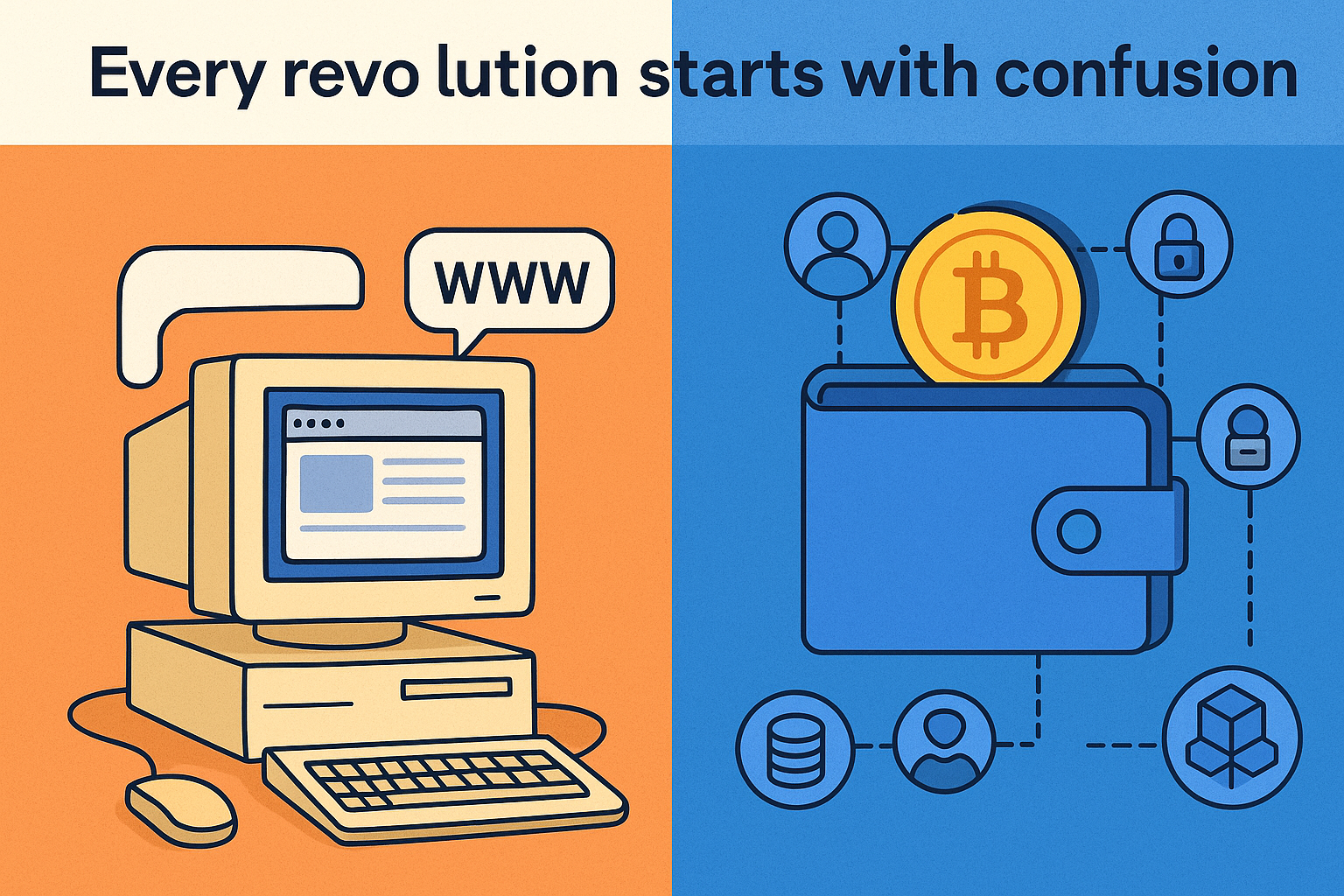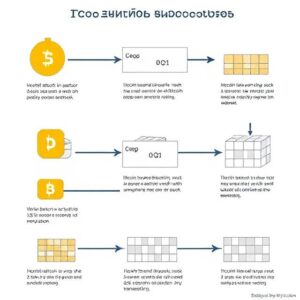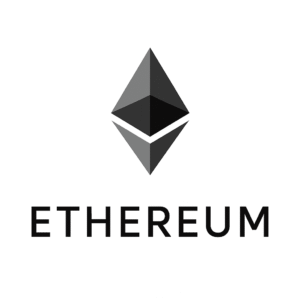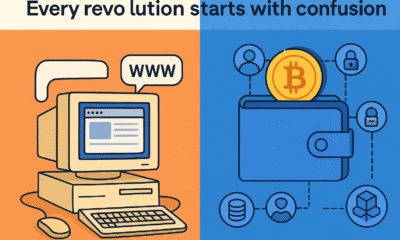BLOCKCHAIN
The Complete Ultimate Guide to Blockchain Technology

Introduction: Why Blockchain Is the Buzzword of Our Time
Back in the early 1990s, the internet was new and confusing. People didn’t understand why they would ever “need” email, online shopping, or websites. Fast forward, and now it’s hard to imagine life without them.
Blockchain is at the same point today. Some see it as overhyped, others as revolutionary. In reality, blockchain is a tool and one with the potential to reshape money, identity, and how we trust each other online.
Definition of Blockchain
Blockchain is a decentralized digital ledger that securely stores records across a network of computers in a way that is transparent, immutable, and resistant to tampering. Each “block” contains data, and blocks are linked in a chronological “chain.” According to Investopedia.com

A split-screen illustration showing “The Internet in 1995” on one side (bulky computers, dial-up), and “Blockchain in the present” on the other side (digital wallets, cryptocurrency icons, connected nodes). Caption: “Every revolution starts with confusion.”
What Is Blockchain Technology? (In Plain English)
At its simplest, blockchain is a special kind of database that stores different information in such a way that makes it extremely difficult to change or hack.
Think of it as a public notebook that is copied across thousands of computers. Every time a page is filled (a “block” of data), it is permanently linked to the previous one, forming a “chain.”
No single person owns the notebook, and everyone can see the same version of the truth.

A friendly cartoon of a giant open notebook connected by glowing chains to multiple laptops and servers, showing everyone writing in it at once.
How Does the Blockchain Technology Work?
Here’s a simple example:
- You send lets say 1 Bitcoin to your friend.
- The transaction is broadcast to computers around the world.
- These computers check if you actually have the Bitcoin.
- Your transaction joins others in a “block.”
- That block is linked to the previous blocks forming a chain.
- It’s now permanent and visible to everyone to see but nobody knows who owns the coin or who made the transaction unlike traditional banks that carries your name and identity.
This process is powered by cryptography mathematical security that ensures no one can secretly alter the data.

A 6-step infographic showing a Bitcoin transaction moving through the network, verification, being added to a block, and then chained to other blocks.
The Power of Decentralization
Unlike banks or governments, blockchain has no central authority or central control system. Data is stored across thousands of computers, meaning no single person or organization controls it.
To hack it, you’d need to take over more than half of all those computers at the same time, a nearly impossible task for large blockchains.

A visual showing a single server (centralized) with a red “X” over it, next to a web of hundreds of computers all connected together (decentralized).
Types of Blockchains
Not all blockchains are the same:
- Public: Anyone can join (Bitcoin, Ethereum).
- Private: Controlled by one organization.
- Consortium: Shared by a group of organizations.
- Hybrid: Mix of public and private.
Each type has its pros and cons, depending on the use case.

A four-quadrant diagram with icons representing public (open globe), private (lock), consortium (group handshake), and hybrid (half open, half locked).
Consensus Mechanisms, How the Various (Block) Blockchains Agree
Blockchains need rules to decide which transactions are valid.
Two main ones are:
- Proof of Work (PoW): Miners solve puzzles to add blocks (Bitcoin).
- Proof of Stake (PoS): Validators lock up coins to earn the right to add blocks (Ethereum now).
Both reward honesty and make cheating very much expensive and time wasting.

A split visual: On one side, miners with pickaxes working on glowing blocks (PoW). On the other, coins locked inside a vault with validators checking them (PoS).
Beyond Money, Real World Application of BlockChain Technology
There are several uses of the Blockchain technology and its importance cannot be overemphasise. However, below are some day to day uses of the Blockchain technology:
- Make payments, using digital currencies like Bitcoin and Ethereum, etc.
- Track food in supply chains (Walmart, IBM).
- Secure voting systems.
- Protect digital identities.
- Store medical records securely.
- Power NFTs and digital collectibles.
It’s more than just cryptocurrency, it’s a tool for trust.

A collage showing a shipping container, a ballot box, a digital ID card, a medical file with a lock, and an NFT artwork, all connected by blockchain nodes.
Advantages of Blockchain Technology
Why people love blockchain:
- Transparency
- Easy and fast
- Security
- Lower costs
- Global accessibility
It’s a technology that doesn’t require blind trust, you can verify everything yourself before clicking send.

A shield made of glowing blocks surrounded by icons representing transparency, low cost, global access, and security.
The Drawbacks and Disadvantages of BlockChain Technology
There is really no good guys without the bad guys and same is applicable in the Blockchain environment. The Challenges include:
- Scalability (Bitcoin is slower than Visa).
- High energy use for some systems.
- Regulatory uncertainty.
- Technical complexity for beginners.
The Future of Blockchain
Soon, blockchain might be as invisible as the internet protocols you use every day. You won’t think “I’m using blockchain”, you’ll just use apps and services that run on it.
What we may see include:
- Central Bank Digital Currencies like USDT and USDC beign adopted by Banks all around the world
- Tokenized real estate and stocks
- Web3 platforms where you own your data

A futuristic city with holographic coins, digital property deeds, and people controlling their own data on handheld devices.
Conclusion: Why Blockchain Matters
Blockchain isn’t magic, it’s math, code, and human cooperation. But it is revolutionary in how it creates trust without a central authority and governement restricions in its usage.
Like the internet in the 90s, it will have hype, scams, and failures—but the ones who understand it early will be ready for the opportunities ahead, dont miss out as we keep you updated.
BLOCKCHAIN
Top Twenty (20) Best Cryptocurrency and their Prices

Cryptocurrency has rapidly evolved from a niche technological curiosity into a global financial phenomenon, reshaping the way we think about money, investment, and decentralization.
Brief History of Cryptocurrency
Bitcoin was launched in the year 2009 by Satoshi Nakamoko and ever since then, the cryptocurrency market has expanded into a multi trillion dollar ecosystem containing thousands of unique digital assets, each with its own purpose, technology, and community. These assets, commonly referred to as “coins” or “tokens,” are built on blockchain technology, a distributed ledger system that ensures transparency, security, and immutability without relying on centralized intermediaries like banks or governments regulations.
While Bitcoin remains the most well known and valuable cryptocurrency, it is far from the only player in the space. Today’s market includes a wide range of projects, from smart contract platforms like Ethereum and Cardano, to stablecoins like Tether and USD Coin, to payment focused assets like XRP and Dogecoin. Each cryptocurrency operates on its own set of fundamentals, employs a particular type of blockchain architecture, and serves a distinct use case within the broader digital economy.
Understanding the differences between these cryptocurrencies is essential for investors, developers, and enthusiasts who want to navigate the complex and fast moving crypto landscape.
However, the idea behind cryptocurrency is older:
-
1980s Early Concepts
-
In 1983, cryptographer David Chaum introduced ecash, an anonymous digital payment system.
-
In the late 1980s, he also developed DigiCash, a form of cryptographic electronic money that required bank approval to use.
-
-
1990s Pre Bitcoin Attempts
-
Several projects like Hashcash (by Adam Back, 1997), b-money (by Wei Dai, 1998), and bit gold (by Nick Szabo, 1998) tried to create decentralized digital money. These laid the groundwork for blockchain based systems.
-
-
2008 The Bitcoin Whitepaper
-
On October 31, 2008, Satoshi Nakamoto published the whitepaper “Bitcoin: A Peer to Peer Electronic Cash System”, outlining how a decentralized digital currency could work without a central authority.
-
-
2009 First Cryptocurrency Launch
-
On January 3, 2009, Nakamoto mined the first Bitcoin block (the Genesis Block), marking the birth of cryptocurrency.
-
Key features and Characteristics of Cryptocurrency
1. Digital and Intangible
Cryptocurrency has no physical form like coins or banknotes. It exists purely as data on a blockchain.
2. Decentralized
Most cryptocurrencies are not controlled by a central authority such as a bank or government. Instead, they are managed by a network of computers (nodes) across the world, making them resistant to censorship or central manipulation.
3. Blockchain Based
Every transaction is recorded in blocks and linked together chronologically. Once confirmed, transactions cannot be altered or deleted, which ensures trust without relying on a middleman.
4. Secured by Cryptography
Complex mathematical algorithms secure the network, protect wallets, and verify transactions. This prevents fraud and double spending.
5. Global and Borderless
Anyone with internet access can send or receive cryptocurrency anywhere in the world, often within seconds to minutes, regardless of borders.
6. Varied Use Cases
Cryptocurrencies can be used for:
-
Payments (e.g., Bitcoin, Litecoin)
-
Smart contracts and decentralized apps (e.g., Ethereum, Cardano)
-
Stable value storage (e.g., Tether, USDC)
-
DeFi and staking rewards (e.g., Solana, Polkadot)
-
NFT and gaming ecosystems (e.g., Immutable X, Axie Infinity Shards)
Example:
-
Bitcoin (BTC) → The first and largest cryptocurrency, created in 2009 by an unknown person or group called Satoshi Nakamoto. It’s designed as a peer to peer payment system and “digital gold.”
-
Ethereum (ETH) → Launched in 2015 by Vitalik Buterin and others, it introduced smart contracts programmable code that executes automatically when conditions are met.
-
Top Twenty (20) Best Cryptocurrency in the world to Invest in, their founders, Prices and Projections
In this Article, we will explore top 20 best cryptocurrencies in the world currently as of August 2025, analyzing their fundamentals, blockchain type, market capitalization as of , founding teams, current price, projected growth, and where available, the number of holders.
1) Bitcoin (BTC)
The original cryptocurrency, a scarce, censorship resistant, store of value and settlement layer often compared to “digital gold.” Bitcoin’s security and policy (21M cap, halving schedule) are the core fundamentals that drive longterm narrative.
Chain type: Layer 1, Proof of Work (PoW).
For BTC Market cap & price (snapshot), see CoinGecko BTC page for the live snapshot. CoinGecko+1
Founders of BTC: Pseudonymous creator Satoshi Nakamoto (identity unknown).
Projection (speculative): $100k–$250k by end of 2025 under a bull scenario driven by continued institutional allocation and macro liquidity; downside (bear/flight to cash) could push BTC back toward $40k–$60k.
2) Ethereum (ETH)
The leading programmable smart contract platform powering DeFi, NFTs, DAOs and Layer2 ecosystems, it’s an energy efficient PoS chain with active L2 expansion.
Chain type: Layer 1, Proof of Stake (PoS) (post merge).

For ETH Market cap & price (snapshot), see CoinGecko+1
Founders: Conceived by Vitalik Buterin and co founders (Gavin Wood et al.).
Projection (speculative): $3,500–$10,000 medium term (12–24 months) depending on L2 adoption, staking dynamics, and global macro. Upside if L2 gas demand and institutional products expand; downside if macro risk or major regulatory headwinds appear.
3) Tether (USDT)
Tether is the largest stablecoin by market cap; a USD pegged token used primarily for trading and settlement and as dollar liquidity on exchanges. Backing and reserve composition is sometimes controversial and tracked closely by regulators and market watchers.
Chain type: Issued across many chains (ERC 20 on Ethereum, TRC 20 on TRON, BSC, etc.).
For Tether market cap & price (snapshot), see CoinGecko+1
Founders / operator: Historically associated with iFinex/Bitfinex and founders such as Brock Pierce (early), Reeve Collins; it’s operated by Tether Limited (corporate structure has evolved).
Projection: Stable at $1 (±small cents) main risk is depeg from reserve shock or regulatory action; expectation is continued broad usage for trading and cross border settlement.
4) Binance Coin (BNB)
BNB Coin is the native token of the BNB Chain ecosystem (originally Binance Chain / BSC). Used for fees, staking, governance, and as an economic token within Binance’s broader product set.
Chain type: Native token of BNB Chain (originally BEP 2/BEP 20 ecosystem).
For BNB market cap & price (snapshot), see CoinGecko
Founders / operator: Launched by Changpeng Zhao (CZ) and Binance team.
Projection: Bull case $500–$1,200 if BNB Chain usage/staking and exchange revenues remain strong; regulatory pressures or centralized custody concerns could compress value.
5) USD Coin (USDC)
USDC is a Regulated stablecoin issued by Circle (originally Centre consortium with Coinbase); used for payments, on chain settlement and institutional rails. Circle has emphasized full reserve transparency.
Chain type: Multi chain (ERC 20 origin; also issued on many L1s / L2s).
For USDC market cap & price (snapshot), see CoinGeckoCoinMarketCap
Founders / operator: Issued by Circle; Circle and Centre consortium (historically Coinbase + Circle) were founders of the USDC initiative; Circle now operates USDC.
Projection: $1 peg under normal conditions; regulatory or reserve events could stress the peg but Circle’s public reporting reduces tail risk relative to uncollateralized alternatives.
6) XRP (XRP)
XRP was Designed for fast cross border settlement and remittances; the XRP Ledger is a payment focused ledger with low fees and fast finality. Ripple (the company) has been a major issuer and promoter of XRPL based solutions.
Chain type: XRPL is a ledger with a unique consensus mechanism (validator based consensus, not PoW / PoS).
For XRP Market cap & price (snapshot), see CoinGecko
Founders: The XRPL was originally built by Jed McCaleb, Arthur Britto and David Schwartz (and commercialized via Ripple Labs).
Projection: $0.50–$3.00 depending on legal/regulatory clarity and institutional adoption for cross border rails; XRP’s price is sensitive to litigation / regulatory news.
7) Solana (SOL)
SOLANA is a High throughput Layer 1 optimized for low latency and cheap transactions; used heavily for high TPS apps, gaming, NFTs and some DeFi. Noted for Proof of History design.
Chain type: Layer 1, PoS with Proof of History concept.
For SOL Market cap & price (snapshot), see CoinGecko
Founders: Anatoly Yakovenko (Solana Labs) is the founding architect; team includes former Qualcomm /
Projection: $150–$450 (highly conditional). Upside if onchain user growth, DeFi and gaming scale; downside risk from recurring outages / centralization criticisms. (Speculative.)
8) Cardano (ADA)
ADA is a Research driven Layer 1 with a formal academic development process emphasizing peer review, on chain governance and energy efficient consensus; focuses on sustainable on chain governance and real world workloads.
Chain type: Layer 1, Proof of Stake.
For ADA Market cap & price (snapshot), see CoinGecko
Founders: Charles Hoskinson (co founder of Ethereum), and IOHK / Cardano Foundation teams.
Projection: $0.60–$3.00 depending on smart contract adoption, sidechain/connectivity and real world projects; Cardano’s deliberate roadmap favors slower, robust rollouts.
9) Dogecoin (DOGE)
DOGE Started out as a meme coin but evolved into a widely accepted tipping/payment coin with strong community and celebrity social media support. Liquidity and market interest often driven by retail & social cycles.
Chain type: Layer 1 fork (Scrypt based PoW, originally a fork of Litecoin/Bitcoin codebase family).
for DOGE Market cap & price (snapshot), see CoinGecko
Founders: Billy Markus and Jackson Palmer created Dogecoin as a lighthearted project.
Projection: $0.05–$0.33 under speculative cycles and broad retail interest; downside large if meme interest fades.
10) TRON (TRX)
TRON is a blockchain aiming for high throughput and low fees, focused on entertainment, content and payments, with many tokenized assets and dApps. TRON also hosts large Tether (USDT) flows.
Chain type: Layer 1, delegated Proof of Stake (dPoS) like; TRC 20 token standard for tokens on TRON.
for TRON Market cap & price (snapshot), see CoinGecko
Founders: Justin Sun founded TRON and has been a prominent (and sometimes controversial) promoter.
Projection: $0.05–$0.30 depending on dApp traction, adoption for payments and regulatory scrutiny of centralized governance. (Speculative.)
11) Polygon (MATIC)
POL is a multi chain scaling framework for Ethereum that hosts many L2 like solutions and sidechains; used to reduce fees and improve UX of Ethereum dApps.
Chain type: Layer 2 / multichain scaling for Ethereum (PoS based sidechains / rollups depending on variant).
for POLYGON Market cap & price (snapshot), see CoinGecko
Founders: the Polygon Project was originally launched by Jaynti Kanani, Sandeep Nailwal, Anurag Arjun and Mihailo Bjelic (Matic → Polygon).
Projection: $1.20–$5.00 if Ethereum L2 demand grows and Polygon keeps developer momentum; downside if Ethereum’s own L2 stack or competing chains outcompete Polygon. (Speculative.)
12) Avalanche (AVAX)
AVAX is a Layer 1 designed for subnetworks and customization that focuses on speed and low fees with a consensus designed by Ava Labs. It supports DeFi and app development with a focus on subnets (application specific chains).
Chain type: Layer 1, PoS (Avalanche consensus family).
for AVAX Market cap & price (snapshot), see CoinGeckoWikipedia
Founders: Emin Gün Sirer and Ava Labs team.
Projection: $20–$150 depending on subnet adoption and cross chain composability; downside if liquidity and developer activity migrate to other L1/L2 ecosystems.
13) Polkadot (DOT)
DOT is an interoperability focused Layer 0 that enables parachains (specialized parallel chains) to interoperate with a shared security model; emphasizes governance and cross chain messaging.
Chain type: Layer 0 with parachain architecture; nominated Proof of Stake for relay chain security.
Founders: Gavin Wood (also co founder of Ethereum) and Web3 Foundation teams.
Projection: $3–$12 depending on parachain development and cross chain adoption; downside tied to comparative L1/L2 adoption.
14) Shiba Inu (SHIB)
Shib is a meme coin launched on Ethereum with a large community (“SHIBArmy”), expanded toward projects like Shibarium (L2), NFTs, and token burns. High token supply; price moves often driven by community momentum and burns.
Chain type: ERC 20 on Ethereum (also bridged variants exist).
for SHIB Market cap & price (snapshot), see CoinGeckoCoinMarketCap
Founders: Created by anonymous “Ryoshi” (community leadership later by other contributors).
Projection: $0.00002–$0.00012 in speculative scenarios if burn/utility accelerate and community demand persists; high downside risk if sentiment fades (meme token).
15) NEAR Protocol (NEAR)
NEAR is a Layer 1 focused on developer UX and sharding (Nightshade) with emphasis on scalability and bridging to Ethereum (Aurora). Aims for easy onboarding of Web3 apps.
Chain type: Layer 1, sharded PoS design (Nightshade).
for NEAR Market cap & price (snapshot), see CoinGecko
Founders: Illia Polosukhin and Alexander Skidanov (co founders).
Projection: $10.00–$60.00 depending on developer adoption and Aurora bridging flows; speculative.
16) Sui (SUI)
SUI is a Move based L1 built by Mysten Labs (team from Meta’s Novi / Move engineers) focusing on UX, asset centric models, and parallel execution for high throughput. Emphasizes fast single object transactions.
Chain type: Layer 1, delegated PoS, Move based smart contracts.
for SUI Market cap & price (snapshot), see CoinGecko+1
Founders: Mysten Labs team including Evan Cheng, Sam Blackshear, Adeniyi Abiodun, George Danezis, etc. (ex Meta/Novi engineers).
Projection: $2–$20 depending on developer traction, Move ecosystem growth, and speed/cost advantages realized in production. (Speculative.)
17) Bitcoin Cash (BCH)
BITCOIN CASH is 2017 hard fork of Bitcoin that increased block sizes to allow more on chain transactions at lower fees pitched as peer to peer electronic cash.
Chain type: Layer 1, Proof of Work (fork of Bitcoin codebase).
Founders / origin: Emerged from Bitcoin protocol community disagreements; technical leadership early included Amaury Séchet (Bitcoin ABC) and other Bitcoin Cash advocates.
Projection: $300–$1,200 depending on merchant uptake and macro crypto cycles; BCH behaves similarly to other Bitcoin forks correlated to BTC cycles.
18) Litecoin (LTC)
LTC is one of the earliest Bitcoin forks (2011), intended as “silver to Bitcoin’s gold” faster block times and scrypt hashing for decentralization of mining at inception. Used for payments and as an on ramp coin.
Chain type: Layer 1, Proof of Work (scrypt).
Founder: Charlie Lee (ex Google engineer).
Projection: $80–$300 depending on payments adoption and general crypto market direction. (Speculative.)
19) Chainlink (LINK)
Link is decentralized oracle network that supplies blockchains with off chain data (price feeds, APIs), a critical middleware for many DeFi apps. High demand when smart contracts require reliable external data.
Chain type: An oracle token running primarily as an ERC 20, connecting off chain data to blockchains.
Founders: Sergey Nazarov and Steve Ellis (and academic collaboration with Ari Juels).
Projection: $15–$60 depending on how oracle demand grows with on chain real world activity. LINK’s utility anchors its upside; lacks native scaling risk beyond Ethereum token dynamics.
20) Monero (XMR)
XMR is a privacy first cryptocurrency using ring signatures, stealth addresses and confidential transactions; prioritized anonymity and fungibility. Used by privacy conscious users and, controversially, by illicit markets.
Chain type: Layer 1, Proof of Work (RandomX) with privacy primitives by default.
Founders / origin: Rooted in CryptoNote whitepaper (authored under pseudonym Nicolas van Saberhagen) and developed by early Monero maintainers (e.g., Riccardo “Fluffypony” Spagni among others).
Projection: $150–$600 depending on regulatory environment and privacy coin delistings; privacy regulatory risk is a material downside factor.
Conclusion (key takeaways)
-
Different use cases dominate value. BTC (scarcity/store of value), ETH (programmability & L2 demand), stablecoins (liquidity/settlement), and various L1s/L2s (scalability, niche apps) mean you should match investment rationale to coin fundamentals.
-
On chain “holders” require care. On chain address counts are noisy proxies for real human holders; exchanges, staking contracts and bridges concentrate tokens into single addresses. Use block explorer distribution charts for deeper insight.
-
Stay explicit on timeframe & risk. Projections above are ranges reflecting scenario analysis (bull, base, bear). Regulatory events and macro liquidity swings can cause wide deviations in short windows.







